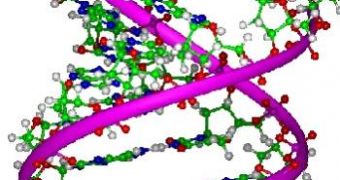At the 237th National Meeting of the American Chemical Society (ACS) yesterday, scientists have unveiled a new DNA model, one that breaks from the average Darwinian approach. While the regular human DNA molecule has four chemical letters, which combine in pairs of two, the new synthetic molecule has 12, which means that, if experts manage to make it “alive,” then it could be used for offering personalized medical treatments to individuals suffering from HIV/AIDS, hepatitis, and other similar diseases.
In addition, the results of future researchers could also yield some interesting answers to the ancient question of how life came to appear and develop on Earth. The team behind the new discovery hopes to do this by creating a self-replicating, self-sustaining molecule that would be capable of Darwinian evolution. Maybe such an experiment could finally reproduce the condition of life some four billion years ago, when the first basic organisms are believed to have appeared, after the oxygenation of our planet, in the Precambrian Age.
“This is a man on the moon goal. It has dragged us kicking and screaming into uncharted territory. But we've learned all sorts of reasons about how the Watson and Crick rules don't enable technology to do useful things like highly parallel amplification of DNA or highly parallel diagnosis of human diseases. These things are worth a lot of money,” Steven Benner, PhD, the leader of the research team behind the find, explains. Nobel laureates James Watson and Francis Crick have been the first people to discover how the four letters of DNA – A, C, G, and T – pair up together in the double-helix structure.
“This is a hundred million dollar product right now. It's used to manage cystic fibrosis, as well. We can also use this technology to go into biological samples and extract known genes with cancer-causing mutations. We can do all of this because we have an artificial DNA system,” he adds.
“What we want to do with personalized care is to give you a cocktail, and then monitor you and discover when the virus becomes resistant to it. Now we don't want to do that too soon – that would waste a lifetime of good viral inhibitors – but not too late, of course. The patient would go in once a month to get their viral load measured. At some point the virus mutates and its viral load goes up. Then you know you better change the cocktail,” he concludes.

 14 DAY TRIAL //
14 DAY TRIAL //